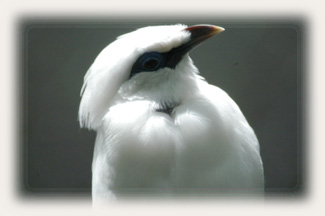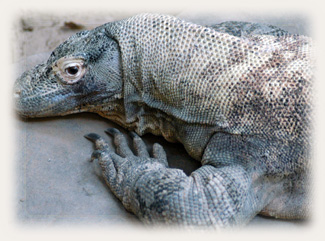 |
| What is a Species Survival Plan? | |||
| The mission of the American Association of Zoos and Aquarium’s Species Survival Plan Program is to help ensure the survival of selected wildlife species. A Species Survival Plan (SSP) is a cooperative population management and conservation program for selected species in zoos and aquariums. Each SSP manages the breeding of a species in order to maintain a healthy and self-sustaining population that is both genetically diverse and demographically stable. SSPs also participate in a variety of other cooperative conservation activities such as research, public education, reintroduction and field projects. |
|
||
 Bali Mynah
(Leucopsar rothschildi) Bali Mynah
(Leucopsar rothschildi) |
How are species selected? A species must satisfy a number of criteria to be selected for a Species Survival Plan. The majority of SSP species are endangered or threatened in the wild and have the interest of qualified professionals with time to dedicate toward their conservation. New SSPs are approved by the appropriate Association of Zoos and Aquariums (AZA) Taxon Advisory Group which manages conservation programs for related groups of species or by the AZA Wildlife Conservation and Management Committee. |
|
|
Each SSP has a qualified species coordinator who is responsible for managing daily activities. Management committees composed of elected experts assist the coordinator with the conservation efforts for the particular species. Also, each institution holding an SSP animal has a representative who attends SSP meetings and coordinates relevant SSP activities at their institution. The overall program is administered by the AZA Conservation and Science Department. |
 Fishing Cat (Prionailurus viverrinus) Fishing Cat (Prionailurus viverrinus) |
||
 Gibbon (Hylobates concolor) Gibbon (Hylobates concolor) |
An SSP master plan outlines the goals for the population. It designs the “family tree” of a particular managed population in order to achieve maximum genetic diversity and demographic stability. Breeding and other management recommendations are made for each animal with consideration given to the logistics and feasibility of transfers between institutions as well as maintenance of natural social groupings. Master plans may also include recommendations not to breed animals to avoid having the population outgrow the available holding space. |
||
A studbook contains the vital records of an entire managed population of a species including births, deaths, transfers and family lineage. A studbook helps the species coordinator and management group to develop a master plan. Data for each studbook is compiled and constantly updated by a studbook keeper who has knowledge of the species and time to assist in its conservation. |
 Komodo Dragon (Varanus komodoensis) Komodo Dragon (Varanus komodoensis) |
||
 Red Panda (Ailurus fulgens) Red Panda (Ailurus fulgens) |
Species Survival Plans also develop husbandry manuals that set guidelines on the best scientific knowledge of animal care. This makes it easier to detect potential health and husbandry problems as well as provides consistent guidelines among participating institutions if the transfer of animals is necessary. |
||
Several SSPs include reintroduction projects, although reintroduction of animals to the wild is not a goal of every SSP. Reintroduction is sometimes the only option for reestablishing healthy wild populations to their natural places in the ecosystem. SSPs for which reintroduction is not appropriate have a positive impact on assisting wild populations through fund-raising to support field projects and habitat protection, development of new technologies, public and professional education programs, and basic and applied research. |
 Sun Bear (Helarctos malayanus) Sun Bear (Helarctos malayanus) |
||
For more information about the specific Mexican Wolf Species Survival Plan, click here. |
|||
